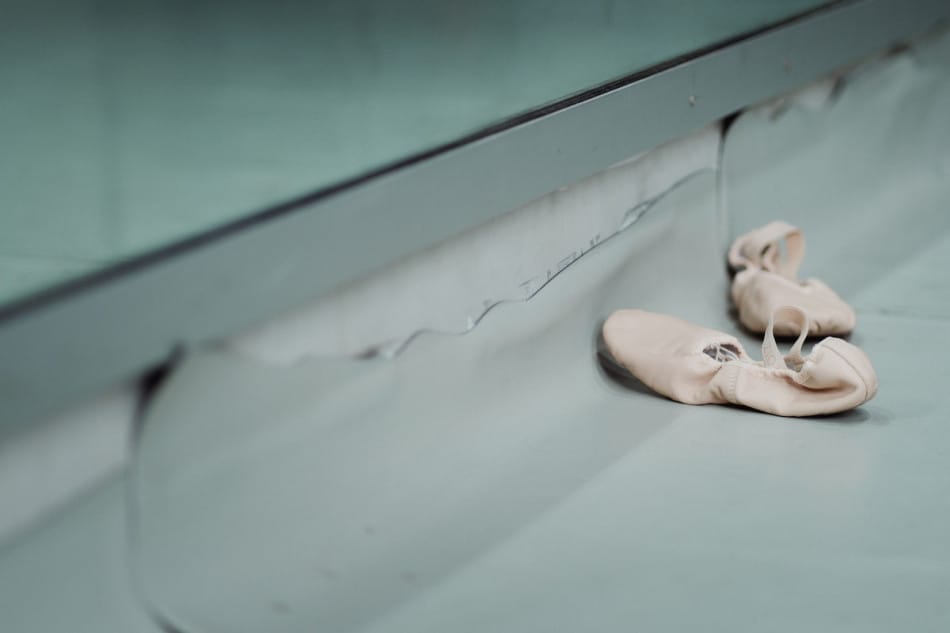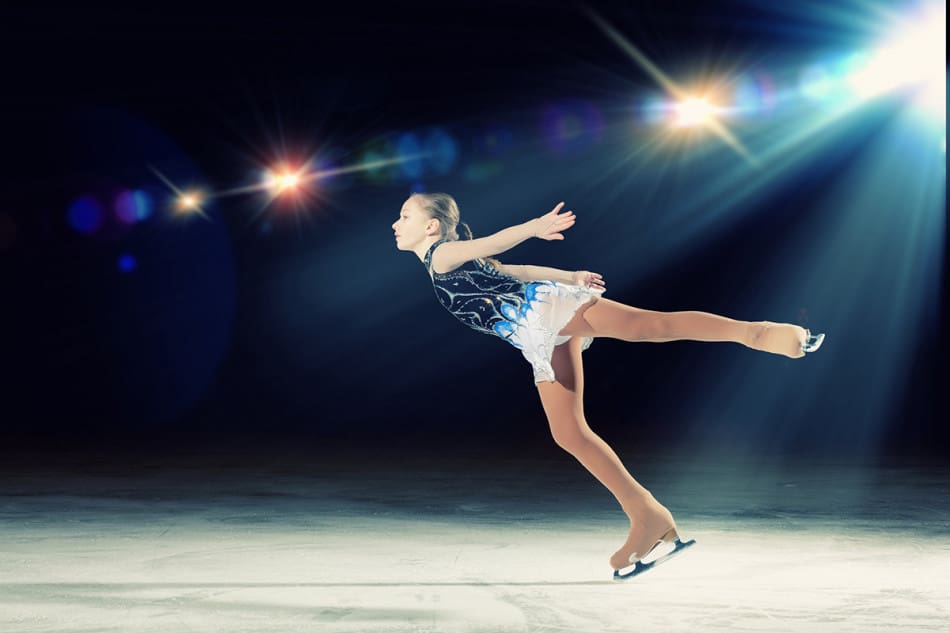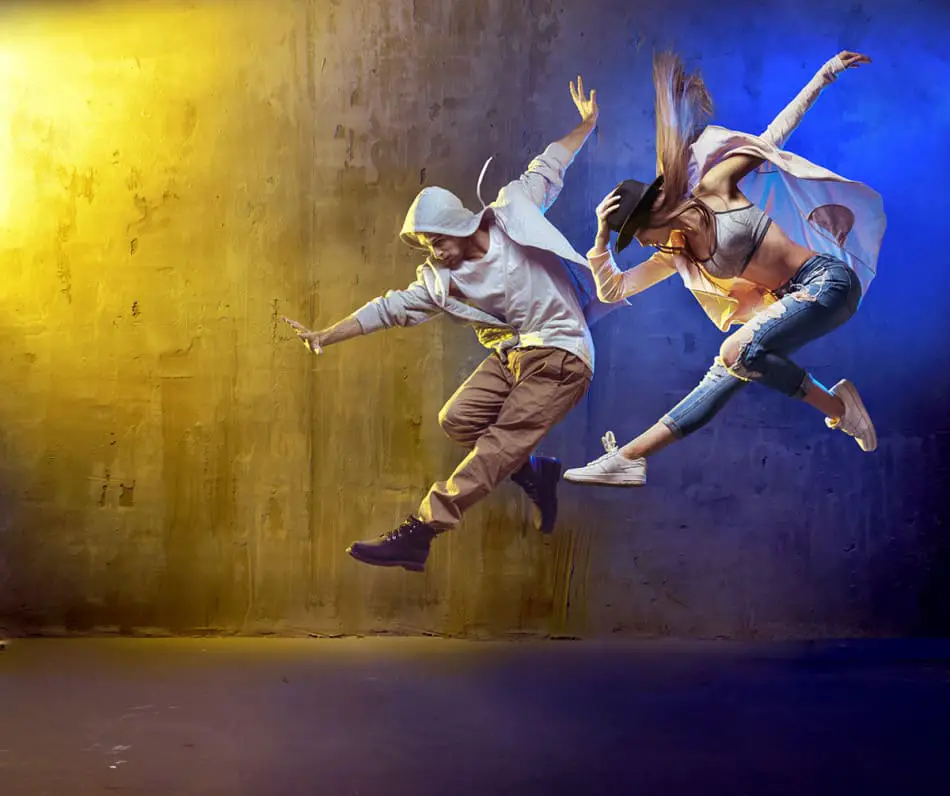Over the years, ballet dancers have wowed their audiences by showing how easy it is to walk on pointe.
You probably think these dancers’ feet are genetically wired that way since you’ve tried to learn to walk on pointe but failed.
So, you ask, can I teach myself to go on pointe?
Yes, you can teach yourself to go on pointe, however, you must be ready to bear the pain that comes with learning to balance while standing on the tips of your toes. Start by studying all the en pointe videos and books you can lay your hands on, then move to practice the techniques and finally, strengthen your ankles and feet with regular exercises.
Constant practice is an essential element in learning to pointe on your own. It takes time to gain the flexibility required for pointe work, but it is worth it.
To learn to pointe on your own, pay close attention to the guidelines and information covered in this article.
How Do You Teach Yourself Pointe?
Learning to go on pointe might be a walk through the park for some, however, for others it might be a nightmare for the first few weeks.
However, by understanding the fundamentals of pointe and practicing the techniques you will have the routine down in no time.
-> Read Also What Is An Autodidact?
1. Start by Understanding the Fundamentals of Pointe

You must fully comprehend the fundamentals of pointe. These fundamentals become simpler with constant practice.
The fundamentals of Pointe include;
Adding Flexibility and Strength to the Feet and Ankles
The fundamental premise of learning pointe is to increase the flexibility of your feet and ankles.
To get the desired strength and flexibility join your toes and align the contours of your foot. You can also use a TheraBand to strengthen the bones in your feet and make your muscles stronger.
Then, extend your legs straight out in front of you to boost your pointe flexibility.
Selecting Good Pointe Shoes
You must choose a suitable pointe shoe to learn how to work with your legs and feet. Good pointe shoes resemble ballet flats, however they are characterized with a flat surface that allows you to balance your toes.
Developing your Physical Strength
Going on pointe requires a delicate mix of physical power and natural poise. To begin pointe training, you should first work on strengthening your entire body to maintain balance.
Additionally, the quality of trunk, abdomen, and stability of your core is also one way of ensuring that you have enough strength and coordination before going on pointe.
To maintain your body and core stability, strengthen your trunk and abdominal regions.
Training Regularly
The frequency of your training allows the practice of your pointe stance and leg flexibility to master going on pointe.
The more you practice, the better you will become at going on pointe.
2. Practice the Pointe Technique

The pointe technique is complicated but becomes more straightforward as you practice consistently and gain confidence in them.
The Pointe Technique involves the following steps:
- First, the dancer supports their fully extended tiptoed feet and entire body weight on the pointe shoes.
- Next, the dancer stands straight in a dove-like pose, balancing their entire body on the tips of their toes.
- After this, the dancer lifts their knees at full-length and straightens their legs fully. In this position, the dancer should ensure their feet protrude and balance on their toes.
- Gradually, the dancer should sway their body in any favorable position.
The pointe technique was developed to give feminine dancers the appearance of being weightless and sylph-like; moreover, both men and women can perform it.
Extensive training and repetition are required to achieve the strength and skill required for the pointe work technique.
Points to Remember when Teaching Yourself the Pointe Technique
The pointe technique is thorough, so you must do well to remember the points highlighted below:
- Practice the pointe technique in a mirror to monitor your leg and body movements.
- Keep your legs together and ensure your posture is correctly aligned.
- Ensure that the swaying of your hands corresponds with the movement of your legs to help you maintain balance.
- Focus on your strength, balance, or control rather than just the “moves.”
3 Essential Exercises to Boost Your Pointe Technique Training
There are exercises you may do to help you learn pointe technique while maintaining your pointe work routine.
Here are three essential exercises:
- Pre-pointe Exercises: Pre-pointe exercises include barefoot training, correct step techniques, and regular pointe warmups. They help develop your pointe steps before you even try a formal personal lesson.
- Ankle and Feet Exercises: Towel stretches, calf raises, heel raises, and leg workouts are examples. These exercises strengthen your feet and ankles that help improve your beginner pointe work.
- Post-pointe Exercises: They include wall push-ups, mini triceps press downs, and cobra stretches. They keep your body in shape after each pointe session. Body Nutrition is also vital, as is maintaining a regular fitness routine.
Here are some pointe exercise videos we know would be really helpful:
- Pointe Exercises For Foot & Ankle Strength And Stability
- How To Improve Your Pointe || Exercises to improve your pointe
Online Resources to Help you Become a Better Self-Taught Pointe Dancer
As you study pointe on your own, you’ll discover a few online resources that are quite beneficial. To avoid any unexpected scenarios, it is always crucial that all information you receive are from reliable sources.
You don’t have to worry about Googling because a few of them will be highlighted and addressed.
YouTube
Self-practice videos on YouTube may teach you a lot about the fundamentals of pointe and how to improve your performance.
They can be used as a reference tool for your pointe practice.
There are a plethora of videos on YouTube, but some of the best self-practice pointe lessons include:
- Beginner Pointe Class | Kathryn Morgan
- Pointe Class BACK TO BASICS | Refine, Strengthen, and Shape Your Feet | All Levels | Kathryn Morgan
- Sophia Lucia – Pointe Solo – DancerPalooza Beat Squad Performance 2016
- How To Know If You’re Ready For Pointe Shoes
Blogs
You can discover how to go on pointe from reliable blogs and websites that offer accurate information and guidelines.
City Academy is a wonderful place to start if you’re unclear where to begin. Their website has vital resources for learning the pointe technique and key points to aid your lessons.
Online Books
There are numerous books available that provide detailed instructions on how to go on pointe. They dissect balance positions, exercise routines, and necessary preparations that will expedite your pointe sessions.
You can purchase these books from Amazon using the “Pointe” filter. Some of your best options include:
- The Pointe Book: Shoes, Training, Technique Paperback – May 11, 2012
- The Pointe Book: 9780871271518: Amazon.com
-> Learn more about the 7 best websites for self-learning
Frequently Asked Questions

Q: Is it Painful to Go on Pointe?
Balance on your toes may seem terrible, but thanks to pointe shoes, dancing pointe does not inflict severe pain. It will feel strange at first, but your feet will adjust to the painful pressure.
If you get sudden, acute pain in your ankles, you should consult a doctor.
Q: How Long Does It Take to Learn to Go on Pointe?
5-6 weeks of consistent training and practice. It takes time to completely understand how to go en pointe.
You must keep practicing until your body grows accustomed to the perfect pointe work.
It’s best to start young, and it’ll take you around three years of consistent practice to master learning to go on pointe.
-> Learn More about Self-Learning vs. Classroom Learning: Which Is Better?
Final Thoughts
Pointe is a tricky technique to master, but if you give yourself enough time to progress slowly as you learn, you will become accustomed to it.
This article outlines the fundamentals of pointe, its techniques, and helpful online resources to bolster your pointe self-lessons.
Next time you want to go en pointe, hopefully, you will have a good foundation of knowledge to build upon.
References
- https://www.adult-ballet.org/learning-pointe-as-an-adult/
- https://www.wikihow.com/Dance-En-Pointe?amp=1
- https://charlotteballet.org/2017/02/09/whats-the-point-of-pointe-shoes/
- https://www.city-academy.com/news/what-is-pointe/
- https://www.amazon.com/Pointe-Ballet-Shoes/s?k=Pointe+Ballet+Shoes
- https://www.amazon.com/Pointe-Book-Shoes-Training-Technique/dp/0871273551
- https://www.amazon.com/The-Pointe-Book/dp/0871271516
- http://www.dancefacts.net/dance-types/ballet-pointe-technique/
- https://www.theballetblog.com/portfolio/improving-beginner-pointe-work/






